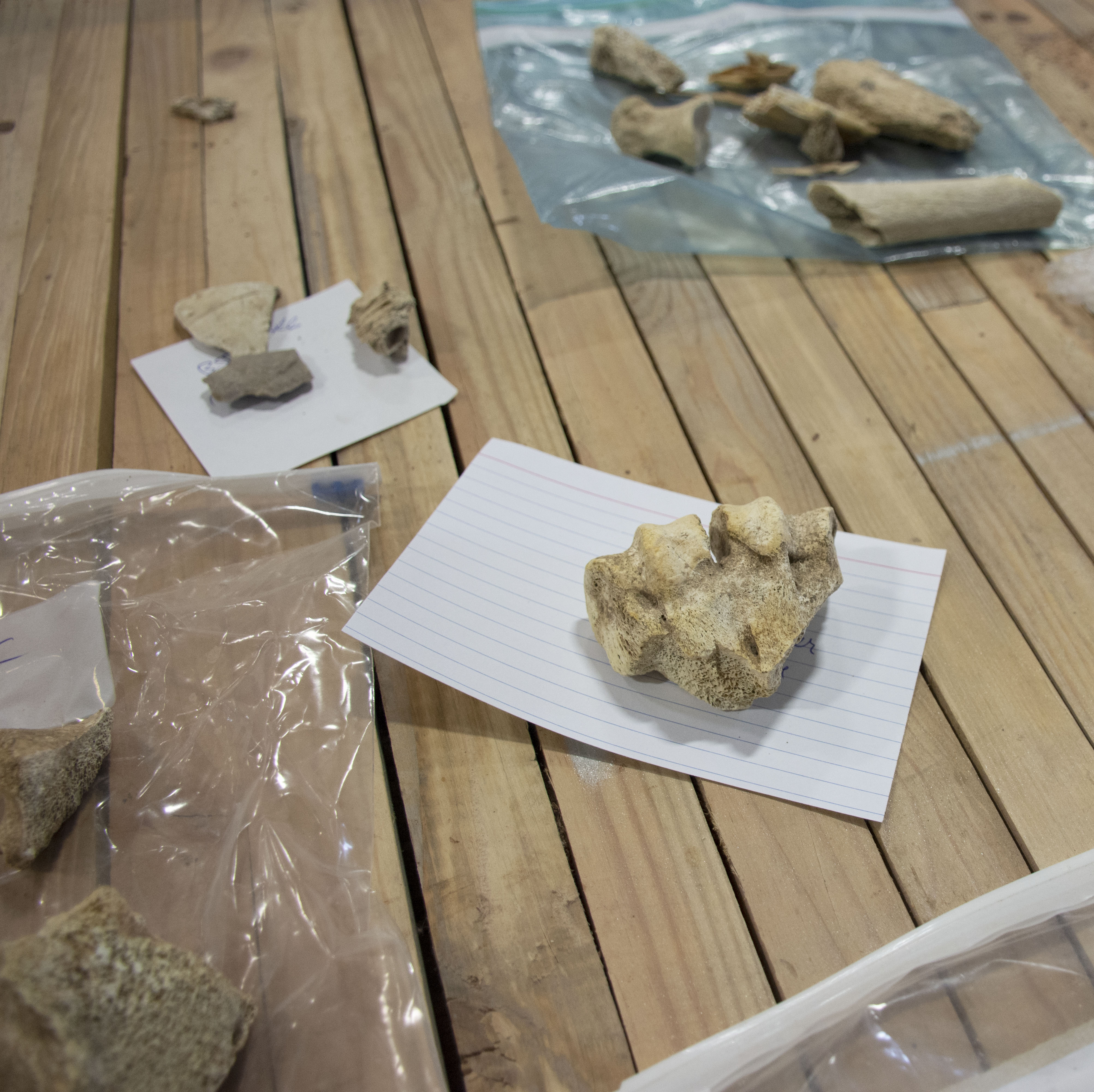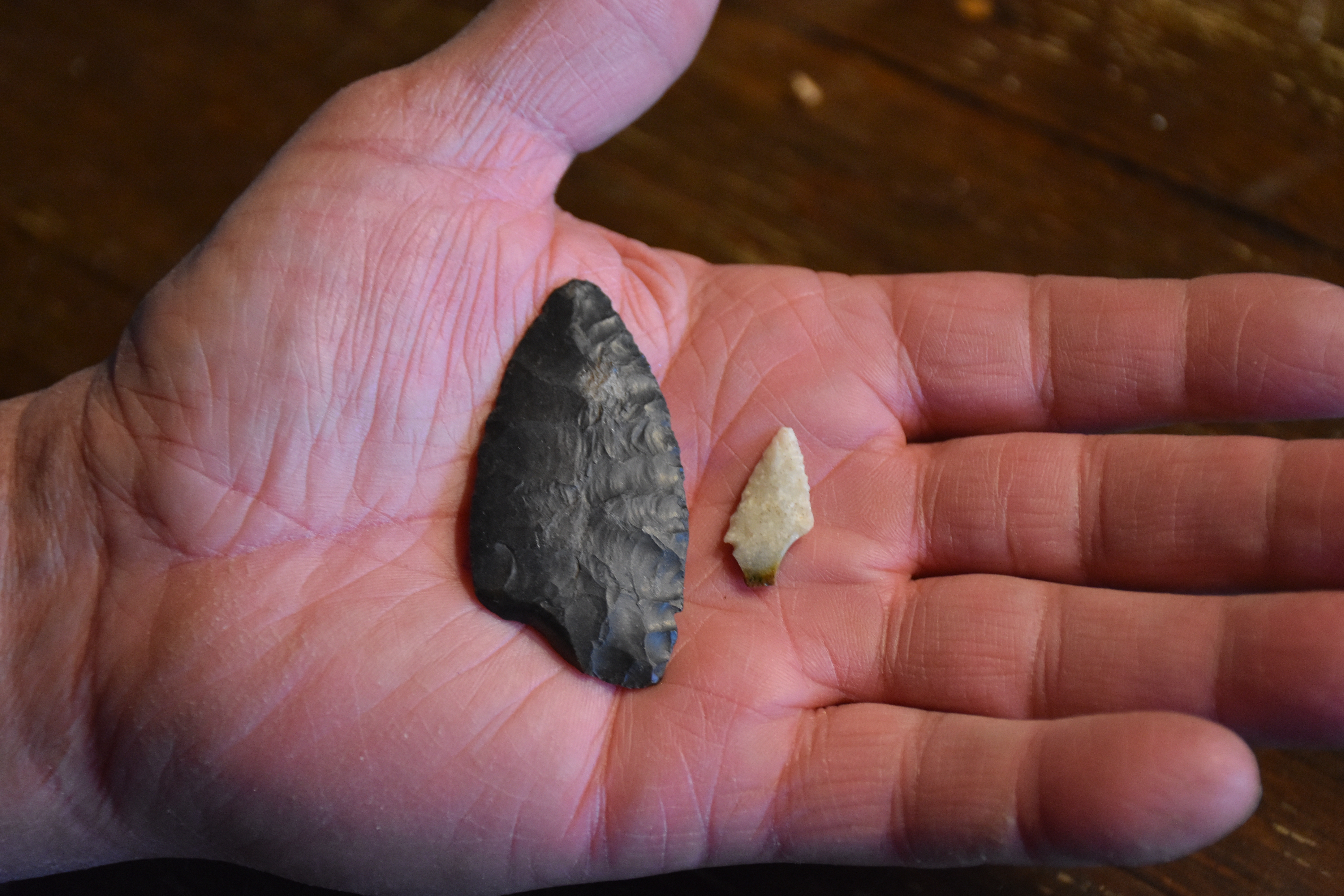By Vance Ehmke
My great grandparents homesteaded here in western Kansas back in 1885. I always thought it was a pretty big deal to be a fourth-generation farmer ”” until the bones of Lane County told me otherwise.
Here on our farm we have a state historical site, 14 LA 311, to be exact. It’s one of the tallest points around, surrounded by 6 to 15 percent slopes. But what makes it a turbocharged Native American campsite is that wrapping around it are a number of playa lakes including a 125-acre lagoon.
The prehistorical Native Americans figured it out pretty quick: As long as there is water in those ponds, we no longer have to hunt. Everything will come to us ”” including mammoths, camels, prehistoric horses, the modern bison, as well as its gigantic predecessor the longhorn bison, along with deer, elk, turtles and waterfowl you can’t believe.
We’ve found bones from all those species, as well as evidence from 10 to 15 different Native American cultures spread out over thousands of years. We’ve been here four going on five generations, but we weren’t the first by a long shot. The archeologists tell me there were 400 to 500 generations here before us. I’ve got a black-flint Goshen spear, or dart point, in our collection that could be as much as 11,000 years old. I don’t know where that Native American was born, and I don’t know where he died. But for at least part of his life, he called Lane County home.
In that general area, our family and archeology teams have found a good deal of artifacts over the years ”” for instance, Native American artifacts stretching from Apache all the way back to the ancient tribes of Clovis and Hell Gap. The Clovis hunted mammoths in Lane County at the end of the last Ice Age, but the Hell Gap did not since mammoths had become extinct by the time they arrived. Louise and I found a mammoth tooth on the hill that later was identified as a Columbian mammoth, the largest of the mammoths living 10,000 to 12,000 years ago. At shoulder height, it stood 12 to 15 feet tall and weighed 10,000 to 20,000 pounds. That’s a lot of meat!


Additionally, we’ve found many other fascinating prehistoric markers like huge bison bones, teeth and foot bones from the prehistoric horse, turtle shells and some occasional ivory. I love the clink of ivory shards! We’ve also found a fair amount of burned bone as well as tiny little snail shells. The archeologists who visit the site tell me they are a lot more excited about early horse artifacts than mammoths because every year somewhere in Kansas someone finds a mammoth. Horses are just rare.
By the way, species like the horse and camel originated in the central and southern High Plains, later becoming extinct here but only after escaping likely out the Bering Strait. Poetically, the Spanish brought the horse back to its birth place 400 to 500 years ago. When it became extinct, it was about the size of a small Quarter Horse.
You can find evidence of more recent Native American cultures like Apache at ground level. Same with Comanches, who drove out the Apaches. After the Comanches crossed the Arkansas River heading south for the last time, the last of the Plains tribes moved in: Sioux, Cheyenne, Kiowa, and Arapahoe, but they were now using metal points that have mostly rusted away.
But if you’re looking for the really old cultures and the really old bones, you’ve got to dig for them. That’s because about 7,000 years ago our climate changed to a 2,500-year period of severe and long-lasting droughts accompanied by incredible dust storms that brought in our present topsoil on suffocating winds out of the northwest. When they say wind-blown loess, they are not kidding! Anybody who’s ever dug a pit for a grain bin or a trench silo can easily spot the 2- to 3-foot thick layer of dark soil on top of the yellow paleo soil.
When digging a basement for an addition to our house some years back, I spotted a mammoth tooth lying on top of the yellow soil ”” right where it was supposed to be. It’s always fun walking new terraces or waterways looking for prehistoric bones. Layton found a 10,000-year-old Hell Gap spear point made out of Smoky Hill jasper on such a walk. And let me tell you what, finding artifacts like that is every bit as thrilling as finding a $100 bill blowing down the street!
This past spring while digging some 15-foot deep pits for grain bins, I found what appeared to be some kind of vertebrae, which the Sternberg Museum in Hays initially identified as from a 10-million-year-old rhinoceros or early ancestor of the camel or giraffe. Others at the Sternberg instead say it may be another 10,000-year-old mammoth.
Some years back a neighboring farmer got the urge to use his earth-moving equipment to dig the 75 to 100 feet to the groundwater table. After hearing about his gigantic hole and dirt pile, Louise and I visited the site and instantly found an unearthed mammoth tooth lying on the ground. We took it to town, gave it to him and he said, “Oh, that’s nothing. There are bones all the way down to the bottom.”
We don’t have any T-Rexs or other dinosaurs here in Lane County because most of Kansas was under an inland salt sea during that time frame (60 to 90 million years ago). Instead, you’ll find some of the best shark teeth and mosasaurus hunting in the world in Gove County to the north. When the Rocky Mountains rose up from tectonic activity, the sea was drained and left the prairie grasslands as we know it today.
While we’ve found tons of animal bones, there is always the possibility that human bone is out there, too. According to oral history, a family of black settlers homesteaded on some of our land, but they all died from a measles infection. A witcher from central Kansas volunteered to find the graves. He located all seven family members plus three Native American graves on the historical site a half mile away. Skeptical about witching, I called a physics professor at K-State and asked what he thought about divining. I was surprised when said there might just be something to it.
So what does all this mean? Anytime you’re digging a hole, dig carefully. You never know what you’re going to find. Could be a mammoth tooth, a Native American spear head or knife point or some other link to our past. You just never know. But you’d better be looking!
